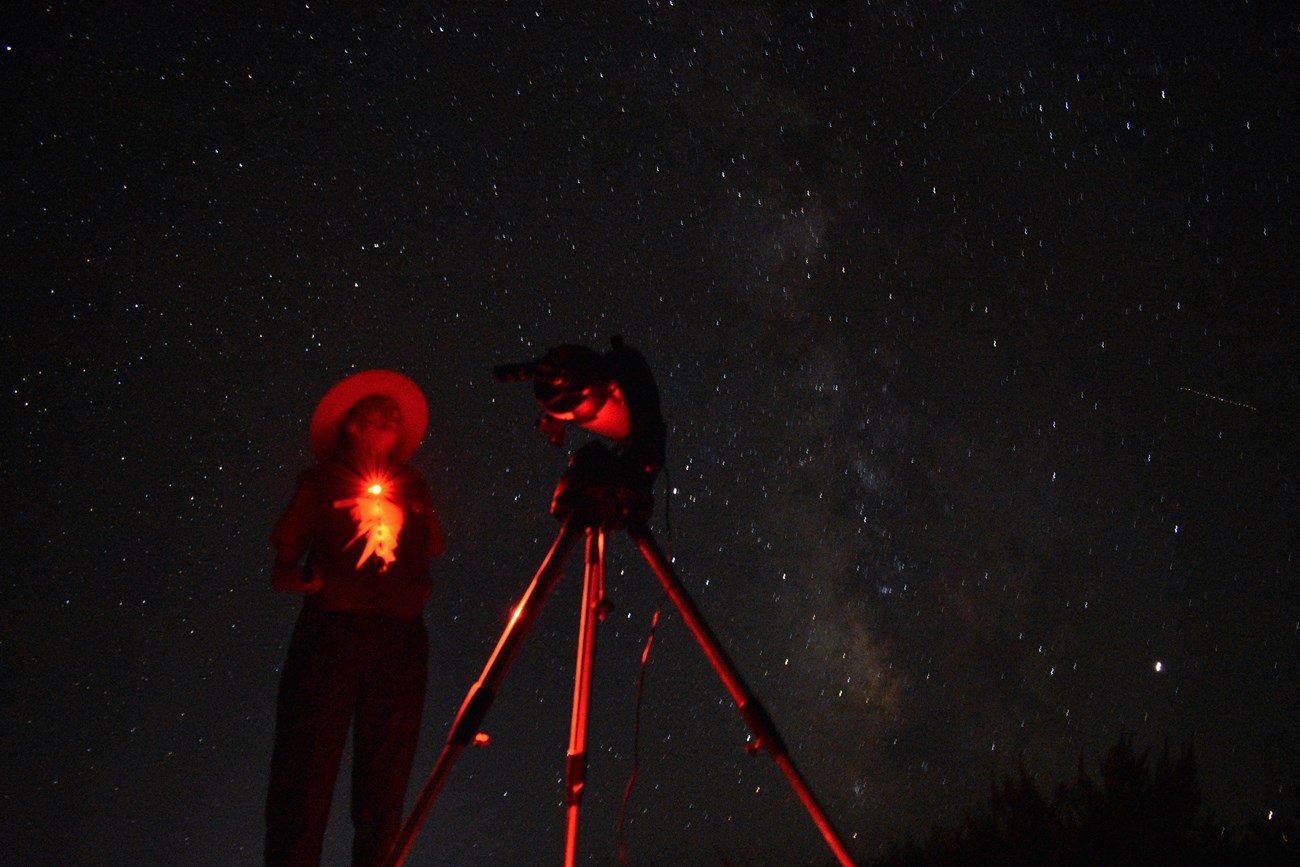Last updated: March 18, 2025
Article
I Didn't Know That!: Stargazing 101

Why do I need to use a flashlight with a red light to view stars?
You heard a meteor shower will be visible where you live and are excited to go to your first stargazing event. You grab extra layers of warm clothes, hot chocolate, and the flashlight from the junk drawer in your kitchen. But did you check to see if that flashlight has a red light option? White lights from flashlights, cell phones, or vehicle headlights can harm your night vision. A red light is much better for stargazing because it won't impact your (and others) night vision as much.
NPS/Martin Tow
Be Considerate
Stargazing is a great way to experience nature, explore science, and ponder history. It is a resource that humans throughout time have looked to as both a mode of navigation and a realm for the spiritual. Constellations and stars have inspired stories and insights across countless cultures over many centuries. There are multiple constellation guides to use: a traditional Ojibwe or Dakota constellation guide, or a Greek-based planisphere. Try them all out and learn something new!
When going out for a stargazing adventure, help preserve the night environment and be considerate of others when viewing the dark night sky by eliminating your use of white lights. This is very important for protecting your night vision because it takes 20-30 minutes for the human eye to maximize its ability to see in very low light conditions. At a star party, you will be best able to enjoy the dark night sky if you give your eyes plenty of opportunity to adapt and if you take care to protect your night vision—and that of those around you.
Your cell phone gives off white light too so keep your cell phones off, tuck them away, and enjoy the moment.

Volunteer photographer Alison Taggart-Barone
What You Can Do
Check out additional tips below to get the most out of your stargazing adventure.
Explore Night Skies Virtually
- Check out our Night Skies site to learn about the science of light, how the park service protects these environments, and even become a Junior Ranger Night Explorer from your own home.
Know Before You Go
-
Not every night is good for stargazing. In fact, most nights aren’t ideal. Nobody wants to excitedly drive miles and then look up to see the stars are hidden by a cloudy night. It’s vital to check the weather and night sky programs before you go in order to make sure it’s worth your time.
Best Stargazing Conditions
-
New moon, before moonrise, or after moonset – Though a very fantastic and powerful celestial body, the moon and its brightness can impede your ability to see the stars in their multitude. Check the phases of the moon and the moonrise and moonset times.
Where to Stargaze
- A whole new world comes alive at night and is waiting to be explored whether you are at home or at a park. See a list of dark sky park destinations, which parks have observatories, and some at-home stargazing tips on our Where to Stargaze page.

Pass It On!
Did you learn something new? Pass it on! Protecting our parks and the natural landscapes is a job for us all, but there’s no way for everyone to be an expert in everything. That’s why sharing knowledge is so important! The next time you see a person using a bright white light at a stargazing event, you can fill them in and assure them it’s ok to admit - “I didn’t know that!”
Download or screenshot this card to share with a friend or help you remember how to best view our starry skies!
Check out other I Didn't Know That! topics.
Text Description for the I Didn't Know That! Stargazing 101 Graphic
White lights can harm your night vision. This includes lights from flashlights, cell phones, or vehicle headlights.
A red light is much better for stargazing. Many flashlights and headlamps have a red-light feature, or you can simply cover your light with red cellophane.
Want to get the most out of your stargazing adventure? Follow these tips:
- Check the weather before you go.
- Check the phases of the moon to see how bright it will be.
- Explore night skies virtually at nps.gov/nightskies
